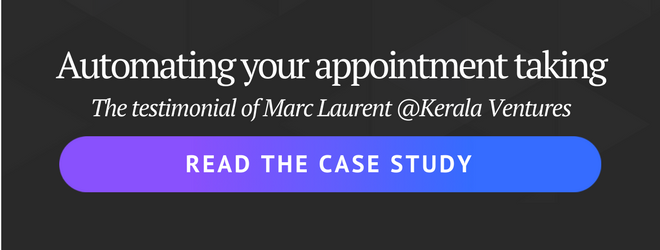The connected home must offer a unified, easy-to-use ecosystem to get the attention of the mass market. That means companies in the sector have no choice but to collaborate.
Imagine an entrance door that unlocks when the owner walks into the driveway, or lights that turn on and off by themselves, or even temperatures that adjust automatically. The smart house is part of our collective reverie about the future and today it seems that a number of companies want to turn that dream into a reality, all without needing to press any buttons. For now though, the smart home market is still its beginnings, mixing products of all kinds and businesses across all horizons.
One of the main issues companies in the industry face is the complexity and fragmentation of the market. For users, the added value of the smart home lies in the interconnection between connected objects, and in their ability to collectively meet their requests. Taken independently, connected objects are nice gadgets, but what counts most for users is what happens when they work together. Take for example the following: a connected washing machine that sends a notification to its owner when it has finished running. That’s unlikely to interest anyone beyond the circle of new technology enthusiasts. But what if the same washing machine could communicate with the water meter to calculate the least expensive time of day to operate and then exchange with the dryer to program the exact amount of time needed to dry the clothes it has just washed? Well that could very well win over a much wider user base.
The Search for a Universal Connector

The fact is, most connected objects are made by different companies in different sectors and making them work together is a real challenge. With this in mind, major technology companies, led by Amazon, Google and Samsung, are working to implement solutions that can serve as intuitive and universal interfaces in the form of voice assistants to allow individuals to easily control their multiple connected objects at once. Everyone wants their solution to be the preferred interface to interact with the smart house. Achieving that would give a company more power in the market and the ability to direct consumers towards their own products to the detriment of the competition.
In addition to each developing their own conversational AI interface, these businesses work via an open platform for developers to build applications around home automation and are constantly multiplying buyouts and partnerships in the connected home field. The goal? To create a harmonious ecosystem for which they would be the preferred ambassadors. In recent years, more and more are working toward that goal. Google recently acquired Nest, a start-up whose smart thermostat is one of the biggest successes in the smart home market. Amazon has also teamed up with Nest’s rival, Ecobee. The thermostats sold by the start-up now incorporate Amazon’s conversational intelligence, Alexa. Jeff Bezos’ company also acquired startup Ring, which designs a connected lock and is included in the Amazon Key project, which allows Amazon deliverers to drop packages directly inside its customers’ homes. The connected lock would allow the delivery person to enter and lock the door behind him.
Samsung, for its part, bought the Viv.ai start-up, launched by Siri alumni, with the ambition of creating a universal voice interface to control everyday connected objects. The company also acquired SmartThings, a communication platform designed to connect an ecosystem of intelligent objects (both those manufactured by Samsung and those made by third parties).
Together these companies are helping to make the market not only more accessible to the user, but also more stable. In fact, a connected object can become unusable if the startup that markets it goes bankrupt: when a large company like Amazon or Samsung is involved, the user has more guarantees. But at the same time, these companies are also strengthening their dominant position, and using the opportunity to collect even more data on individuals. Amazon already knows everything about our buying habits and Google is very aware of what we do on the web. By inviting themselves into our homes, these companies will become even more omniscient than they already are.
When Large Companies and Start-ups Collaborate
New technology giants entering the scene will have to deal with the traditional players in the industry, who do not intend to let themselves be cannibalized. Businesses in the energy, household appliances, telecommunications and mass retail sectors have begun working together to promote their own solutions for the user experience to compete with the likes of Google, Amazon and others. In France, Auchan, Leroy Merlin and Boulanger have joined forces to develop the Enki ecosystem, a control center that unifies the various objects of the connected house.
Still, others oscillate between collaboration and competition. France’s EDF recently launched the Sowee intelligent thermostat, which competes with the American Nest and Ecobee, and whose latest version is compatible with Alexa. In Germany, the Bosch Group has set up a division exclusively dedicated to the smart home market. Just like their digital counterparts, traditional companies in the industry are counting on collaboration with home automation startups to build a coherent, unified and easy-to-use ecosystem. In the US, supermarket giant Walmart, Amazon’s largest competitor, has set up its own Smart Home division and joined forces with August, a start-up company that manufactures connected locks and security cameras. The goal is to implement a home delivery system that can compete with Amazon Key.

Walmart has also partnered with Microsoft to develop intelligent solutions around the connected home. Velux has teamed up with the young connected object manufacturer Netatmo to offer an intelligent window solution that can reduce energy consumption using system of distributed sensors in the house measures heat and air quality to automatically open or close the windows as needed. Bouygues Immobilier has formed a partnership with the Aix startup Ween, which offers an intelligent drop-shaped thermostat. The latter will be integrated into the apartments of a new eco-neighbourhood whose construction Bouygues is managing. The young American company Axius, which, inspired by Alexa and Google Home, wishes to propose a communication interface in the form of a universal connector for connected home objects. Axius works side-by-side with several real estate companies in the cities of New York, San Francisco, Los Angeles and Washington.
In each of these examples, the business expertise of traditional businesses is combined with the technology of a young startup. Combining the financial resources and distribution capabilities of large groups with the flexibility, agility and responsiveness of start-ups is a winning combination in most markets. But the smart house market is still marked by a fragmentation of supply and an aggressive strategy by Internet giants which will make it imperative to join forces to succeed.

